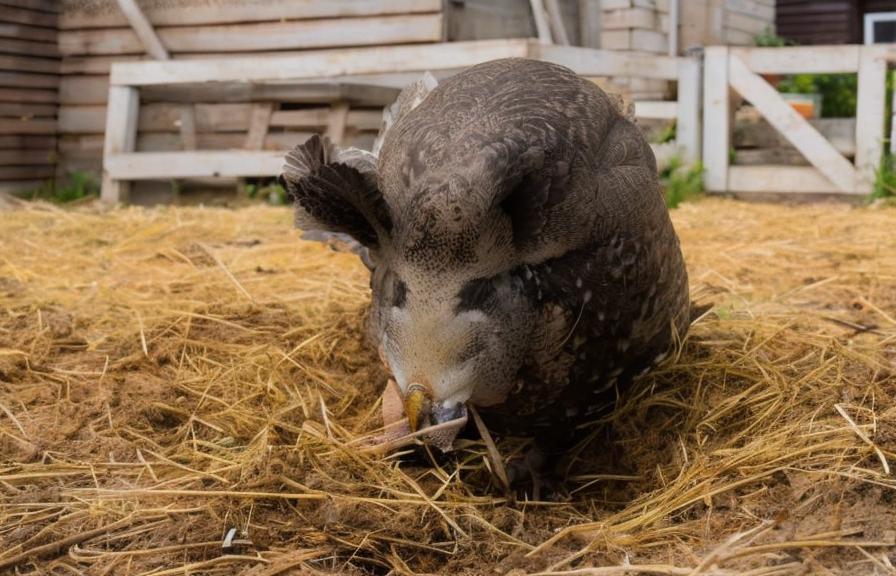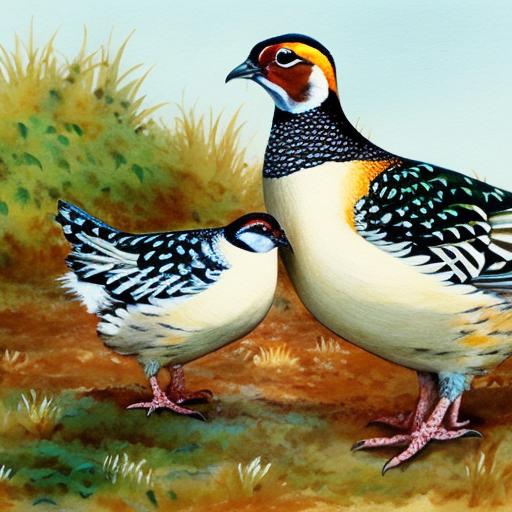Jumbo quail breeding is a lucrative and rewarding venture for those interested in poultry farming. Jumbo quails are known for their large size, fast growth, and high egg production, making them a popular choice for commercial breeding. These birds are easy to manage, require minimal space, and have a high feed conversion ratio, making them a cost-effective option for farmers. Jumbo quail breeding can be a profitable business, as there is a high demand for quail meat and eggs in the market. With the right knowledge and resources, anyone can start a successful jumbo quail breeding operation.
Jumbo quail breeding requires careful planning and attention to detail to ensure the success of the venture. Farmers must select the right breeding stock, provide proper housing and care, manage the breeding and incubation process, rear the chicks, and manage the health and disease of the quails. Additionally, marketing and selling the quail products is an important aspect of the business. In this article, we will discuss each of these aspects in detail to provide a comprehensive guide to jumbo quail breeding.
Key Takeaways
- Jumbo quail breeding is a profitable venture that requires proper knowledge and management.
- Select breeding stock based on health, size, and productivity to ensure successful breeding.
- Provide adequate housing, nutrition, and care to breeding quail for optimal productivity.
- Follow a strict breeding and incubation process to ensure high hatch rates and healthy chicks.
- Properly rear and care for chicks to ensure their growth and development into productive quail.
Selecting Breeding Stock
Selecting the right breeding stock is crucial for the success of a jumbo quail breeding operation. Farmers should choose healthy, disease-free birds with good genetic traits for size, growth rate, and egg production. When selecting breeding stock, it is important to choose birds that are at least 6-8 weeks old and have reached sexual maturity. Look for birds that are active, alert, and have bright eyes and clean feathers. Avoid birds that are too small or too large for their age, as this may indicate health or genetic issues.
It is also important to select an equal number of males and females for breeding to ensure a balanced gene pool and optimal fertility. When choosing breeding stock, consider the lineage and pedigree of the birds to ensure that they come from good genetic stock. Additionally, consider the temperament of the birds, as aggressive or overly timid birds may not be suitable for breeding. By carefully selecting breeding stock with good genetic traits and overall health, farmers can lay a strong foundation for a successful jumbo quail breeding program.
Housing and Care for Breeding Quail
Proper housing and care are essential for the health and well-being of breeding quail. Quails can be housed in cages or aviaries, with each bird requiring at least 1 square foot of space. The housing should be well-ventilated, with adequate lighting and protection from predators. Provide nesting boxes or areas for the quails to lay their eggs, as well as perches or platforms for them to roost. The flooring of the housing should be covered with a suitable bedding material such as wood shavings or straw to absorb waste and provide a comfortable environment for the birds.
Quails should be provided with a balanced diet that includes a high-quality commercial feed supplemented with fresh greens, grains, and protein sources such as mealworms or crickets. Clean, fresh water should be available at all times, and feeders and waterers should be regularly cleaned and refilled. It is important to monitor the health of the quails regularly and provide any necessary medical care or treatment. By providing proper housing and care for breeding quail, farmers can ensure the health and productivity of their birds.
Breeding and Incubation Process
The breeding and incubation process is a critical stage in jumbo quail breeding. To encourage breeding, provide a suitable environment with proper lighting, temperature, and nesting areas. Monitor the behavior of the birds for signs of mating, such as males displaying courtship behavior or females laying eggs. Collect the eggs daily and store them in a cool, dry place until they are ready for incubation.
When incubating quail eggs, use a reliable incubator with accurate temperature and humidity control. The eggs should be turned several times a day to ensure proper development, and any infertile or damaged eggs should be removed. After 17-18 days of incubation, the eggs will begin to hatch, and the chicks will need to be transferred to a brooder for warmth and protection. By carefully managing the breeding and incubation process, farmers can maximize the hatch rate and ensure the health of the chicks.
Rearing Chicks
Rearing chicks is an important part of jumbo quail breeding, as it sets the foundation for the future productivity of the birds. Chicks should be kept in a brooder with a heat source such as a heat lamp or heating pad to maintain a temperature of around 95 degrees Fahrenheit for the first week, gradually decreasing by 5 degrees each week until they are fully feathered. Provide clean bedding, fresh water, and a high-quality starter feed formulated specifically for quail chicks.
Monitor the chicks closely for signs of illness or distress, and provide any necessary medical care or treatment. As the chicks grow, gradually introduce them to larger housing with access to outdoor areas if possible. By providing proper care and nutrition during the rearing process, farmers can ensure that the chicks grow into healthy, productive adult quails.
Health and Disease Management

Health and disease management are crucial aspects of jumbo quail breeding. Monitor the birds regularly for signs of illness or distress, such as lethargy, loss of appetite, respiratory issues, or abnormal feces. Provide a clean environment with good ventilation and proper sanitation to prevent the spread of disease. Quarantine new birds before introducing them to the existing flock to prevent the spread of any potential diseases.
It is important to work with a veterinarian experienced in avian health to develop a comprehensive health management plan for the quails. This may include regular vaccinations, parasite control, and routine health checks. Additionally, provide a balanced diet with proper nutrition to support the overall health and immune function of the birds. By implementing a proactive approach to health and disease management, farmers can minimize the risk of illness and ensure the long-term productivity of their quail flock.
Marketing and Selling Jumbo Quail
Marketing and selling jumbo quail products is an important aspect of running a successful breeding operation. There is a growing demand for quail meat and eggs due to their nutritional value and unique flavor. Develop a marketing strategy to reach potential customers, such as local restaurants, specialty food stores, farmers’ markets, or direct-to-consumer sales through online platforms or on-farm sales.
Highlight the unique qualities of jumbo quail products, such as their large size, tender meat, and rich-flavored eggs. Consider offering value-added products such as marinated quail meat or pickled quail eggs to attract a wider customer base. Provide clear information about the farming practices used to raise the quails, such as free-range or organic methods, to appeal to consumers interested in sustainable and ethical food choices.
By building strong relationships with customers and delivering high-quality products, farmers can establish a loyal customer base and generate repeat business. Additionally, consider participating in industry events or trade shows to showcase jumbo quail products and network with potential buyers. With effective marketing and sales strategies in place, farmers can capitalize on the growing demand for jumbo quail products and build a successful business in the poultry industry.
In conclusion, jumbo quail breeding offers an exciting opportunity for farmers interested in poultry farming. By carefully selecting breeding stock, providing proper housing and care, managing the breeding and incubation process, rearing healthy chicks, implementing proactive health management practices, and developing effective marketing strategies, farmers can build a successful jumbo quail breeding operation. With the right knowledge and resources, anyone can start a profitable venture in jumbo quail breeding and contribute to meeting the growing demand for quail meat and eggs in the market.
If you’re interested in jumbo quail breeding, you may also want to check out Poultry Wizard’s article on “How Long for Chicken Eggs to Hatch Naturally.” This informative piece provides valuable insights into the natural hatching process of chicken eggs, which can offer useful parallels and considerations for those looking to breed jumbo quails. You can find the article here.
FAQs
What is jumbo quail breeding?
Jumbo quail breeding refers to the process of raising and breeding jumbo quail, a larger and meatier breed of quail, for commercial or personal purposes.
What are the benefits of jumbo quail breeding?
Jumbo quail breeding can provide a sustainable source of meat and eggs. Jumbo quail are known for their fast growth and high meat-to-bone ratio, making them a popular choice for meat production.
What are the key considerations for jumbo quail breeding?
Key considerations for jumbo quail breeding include proper housing, nutrition, and breeding management. It is important to provide a suitable environment for the quail to thrive and to ensure they receive a balanced diet to support their growth and reproduction.
What are the ideal conditions for jumbo quail breeding?
Jumbo quail thrive in a well-ventilated and clean environment with access to fresh water and a balanced diet. They require adequate space for movement and nesting, as well as protection from predators.
What are the common challenges in jumbo quail breeding?
Common challenges in jumbo quail breeding include disease management, maintaining optimal breeding conditions, and ensuring proper nutrition. Additionally, managing the breeding process to maintain genetic diversity and avoid inbreeding is important for the long-term success of the breeding program.
Meet Walter, the feathered-friend fanatic of Florida! Nestled in the sunshine state, Walter struts through life with his feathered companions, clucking his way to happiness. With a coop that’s fancier than a five-star hotel, he’s the Don Juan of the chicken world. When he’s not teaching his hens to do the cha-cha, you’ll find him in a heated debate with his prized rooster, Sir Clucks-a-Lot. Walter’s poultry passion is no yolk; he’s the sunny-side-up guy you never knew you needed in your flock of friends!







